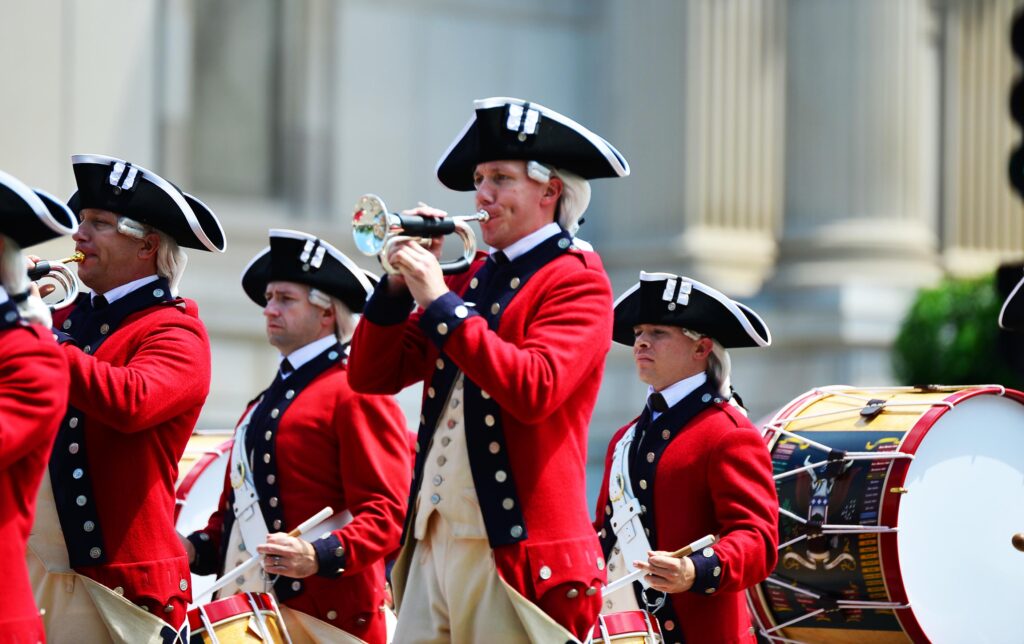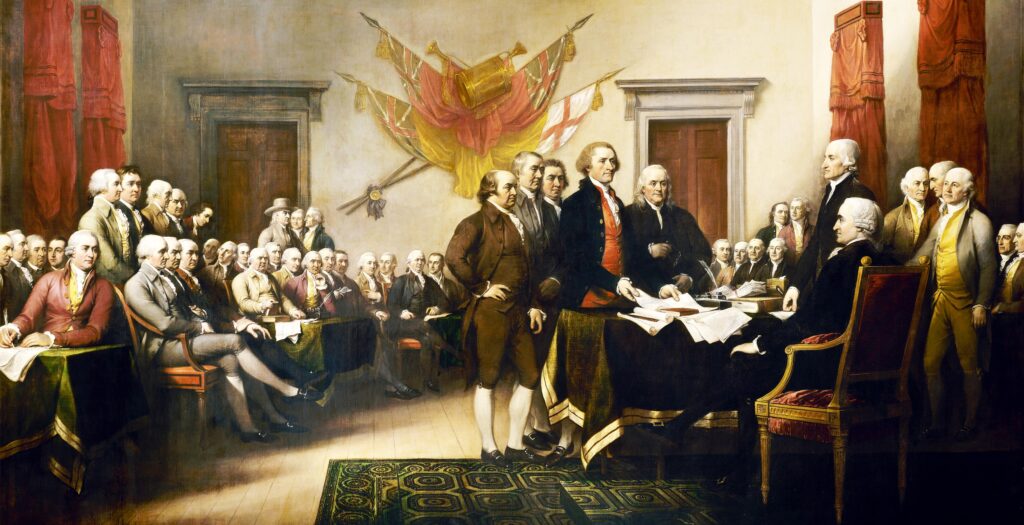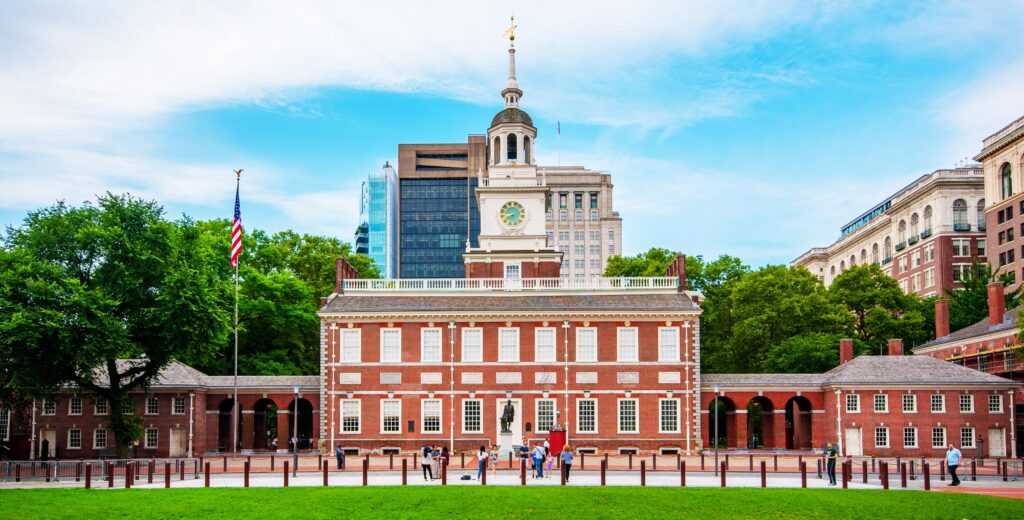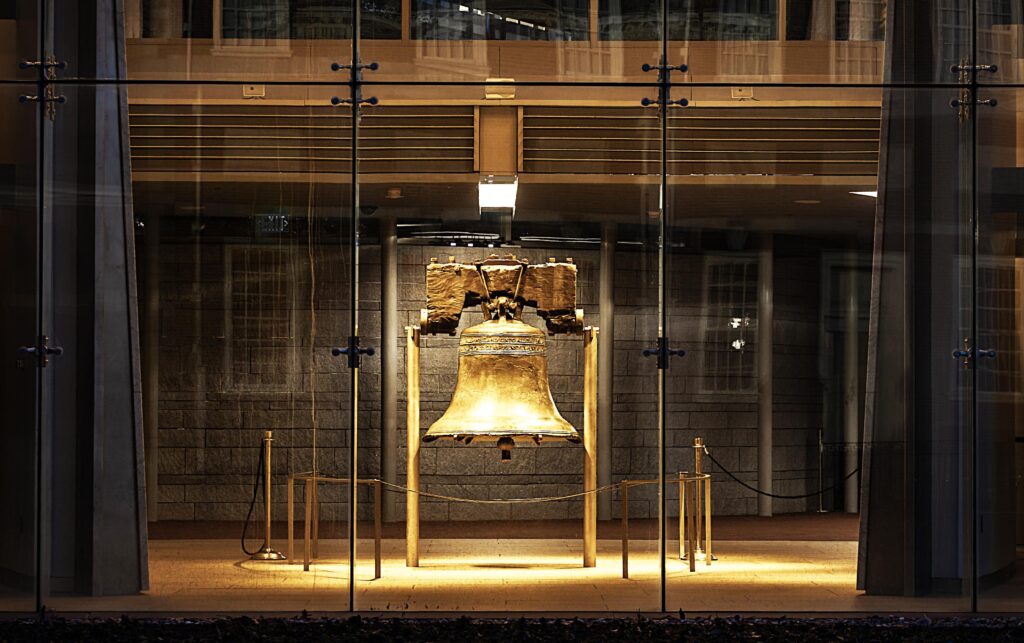 From What Date Pandemonium to Historical Deaths… Uncovering the Wacky World of the Fourth of July Facts!
From What Date Pandemonium to Historical Deaths… Uncovering the Wacky World of the Fourth of July Facts!
Most of us know the basic Fourth of July facts, such as when, where, and how the holiday is celebrated today. But, there’s some other not so well known history of how and why this important day came to be.
The fourth of July, also known as Independence Day, is a significant holiday in the United States commemorates the country’s declaration of independence from Great Britain on July 4, 1776. It is a day of celebration filled with fireworks, parades, and barbecues, but many little-known facts about this holiday often go unnoticed. From the surprising history of the chosen date to the deaths of the Declaration of Independence signers, there is much to learn about the Fourth of July that goes beyond the traditional festivities.
Here’s just four facts to get your curiosity started. Plus, they are fun conversation pieces at a party or nice-to-meet-you ice-breakers!
 July 4th was not declared a federal paid holiday until 1941, over 150 years after the signing of the Declaration of Independence.
July 4th was not declared a federal paid holiday until 1941, over 150 years after the signing of the Declaration of Independence.
Although the Fourth of July had been celebrated as an important date in American history since the Declaration of Independence was adopted in 1776, it wasn’t until in 1870, the U.S. Congress made July 4th a federal holiday; but it did not become an official federal holiday until 1941.
There were a few reasons for this delay:
- In the country’s early years, Independence Day was celebrated more regionally or locally rather than on a national level.
- The U.S. government officially recognized national holidays in the late 1800s when Congress passed a law making New Year’s Day, Thanksgiving, and Christmas federal holidays.
- Despite efforts by various groups and individuals to make Independence Day a federal holiday, there was resistance from some who believed that it was not a day for government-sanctioned celebration.
- It wasn’t until the early 20th century, with the rise of patriotic organizations and a growing sense of national identity, that the push for an official federal holiday gained more momentum.
Finally, in 1941, Congress passed a law making the Fourth of July a federal holiday, officially recognizing it as a celebration of American independence.
 John Adams, one of the Founding Fathers, believed that July 2nd, the day Congress voted for independence, would be celebrated as Independence Day.
John Adams, one of the Founding Fathers, believed that July 2nd, the day Congress voted for independence, would be celebrated as Independence Day.
John Adams believed that July 2nd, 1776, was the most important day in the history of the United States because it was the day that the Continental Congress voted in favor of independence from Great Britain. In a letter to his wife, Abigail, Adams wrote: “The second day of July 1776 will be the most memorable epoch in the history of America. I am apt to believe that it will be celebrated by succeeding generations as the great anniversary festival. It ought to be commemorated as the day of deliverance by solemn acts of devotion to God Almighty.”
Adams thought July 2nd would be celebrated as Independence Day because that was the day the resolution for independence was adopted. He felt it was a more important date than July 4th, when the Declaration of Independence was formally adopted and signed.
However, despite Adams’ prediction, July 4th has become the widely recognized and celebrated Independence Day in the United States.
 The first Independence Day celebration occurred on July 8th, 1776, in Philadelphia, Pennsylvania, where the Declaration of Independence was read aloud to the public.
The first Independence Day celebration occurred on July 8th, 1776, in Philadelphia, Pennsylvania, where the Declaration of Independence was read aloud to the public.
The Declaration of Independence was first read aloud to the public on July 8th, 1776, from the steps of the Pennsylvania State House, now known as Independence Hall, in Philadelphia, Pennsylvania. Colonel John Nixon, the town crier, then read the document.
The event was marked by the ringing of bells and the firing of guns, and it was attended by a large crowd of people who had gathered to hear the news of the colonies’ independence from Great Britain.
 The Liberty Bell, now a symbol of American independence, was not rung on July 4th, 1776. It was not even called the “Liberty Bell” until the 1830s.
The Liberty Bell, now a symbol of American independence, was not rung on July 4th, 1776. It was not even called the “Liberty Bell” until the 1830s.
The bell that we now know as the “Liberty Bell” was initially called the “State House Bell” or the “Provincial Bell” because the Pennsylvania Provincial Assembly commissioned it to commemorate the 50th anniversary of William Penn’s 1701 Charter of Privileges.
It was cast in 1752 by the Whitechapel Bell Foundry in London, England, and it was shipped to Philadelphia, where it was installed in the steeple of the Pennsylvania State House (now Independence Hall).
The bell was first rung to summon lawmakers to meetings and to alert citizens to public announcements. Over time, it became known for its distinctive tone and was used to mark significant events, such as the reading of the Declaration of Independence in 1776.
It was not called the “Liberty Bell” until the 1830s when abolitionists began to use it as a symbol of their cause. The bell’s inscription, “Proclaim Liberty Throughout All the Land Unto All the Inhabitants thereof” (from Leviticus 25:10), was seen as a call to end slavery, and the bell became known as the “Liberty Bell” to many Americans.
Since 1846, the Liberty Bell has remained unrung to prevent further damage to its cracked surface. However, every year on July 4th, the bell is symbolically tapped 13 times to commemorate the significance of the day.
 Three U.S. presidents died on July 4th: John Adams, Thomas Jefferson, and James Monroe.
Three U.S. presidents died on July 4th: John Adams, Thomas Jefferson, and James Monroe.
- John Adams, the second U.S. president, died on July 4th, 1826, at 90. Adams died the same day as his political rival and friend Thomas Jefferson.
- Thomas Jefferson, the third U.S. president, died on July 4th, 1826, at 83. Jefferson died a few hours before John Adams on the same day, the 50th anniversary of adopting the Declaration of Independence.
- James Monroe, the fifth U.S. president, died on July 4th, 1831, at 73. Monroe died five years after Jefferson and Adams on the same day.
A little history:
The facts mentioned in the titles and subtitles are considered “little known” because they may not be widely discussed or are not commonly known by the general public.
While some facts may be well-known to history buffs, others should be more noticed in the traditional narratives surrounding the Fourth of July.
These lesser-known facts may provide a unique perspective on the holiday and its significance or be amusing tidbits that add humor and fun to the celebration.


